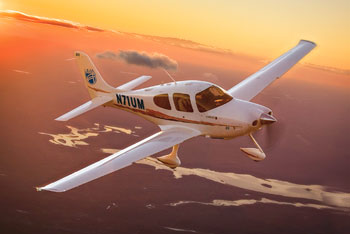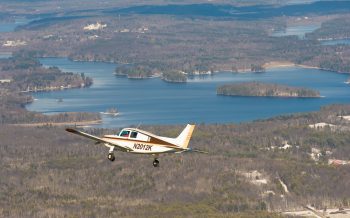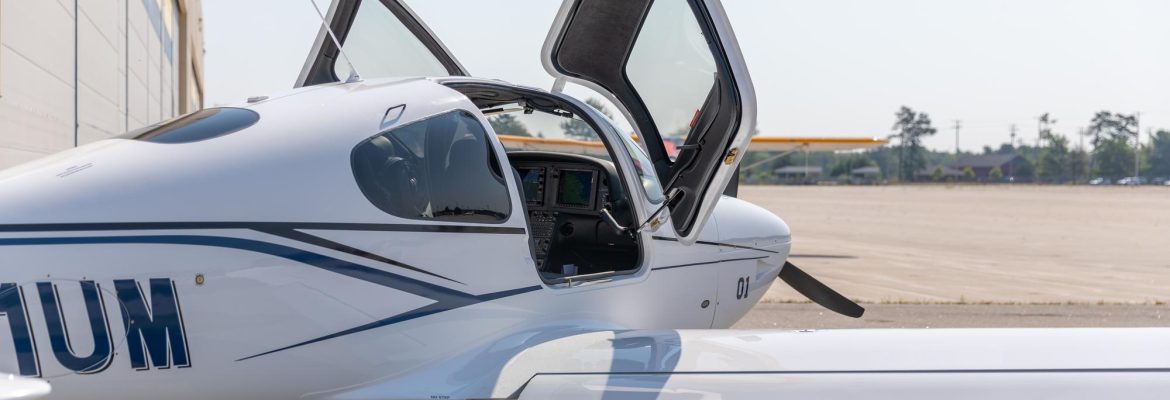The only BS Aviation Program in Maine and one of only two in New England.
UMA’s BS in Aviation represents a public-private partnership with Maine Instrument Flight (MIF), a highly regarded flight school located in Augusta. Flight Training is completed at the Augusta Airport and Academic training is completed at UMA Augusta Campus. Training pilots since 1946, MIF is the only FAA Part 141 certified flight school in the state of Maine that is approved for all courses.
Through the UMA program, MIF will equip students with the following four FAA certifications: private pilot in the first year, instrument rating in the second year, commercial pilot in the third year, and flight instructor in the fourth year.
Low Airfare
UMA provides the best in-flight training with the most efficient use of the student’s financial resources. Because of UMA’s low public tuition rates, and the availability of our flight simulators, the BS in Aviation is competitively priced with other programs nationwide. Significant value is added when factoring in technically advanced training, advanced debrief tools, and virtual reality simulation. Plus, financial aid is available to most students to help offset the costs, and if you’ve served in the armed forces, your military education benefits may pay a portion of your tuition and fees. Our use of simulation and Virtual Reality has a positive environmental impact as well, saving a significant amount of fuel.
UMA’s Cirrus SR20 G6

UMA acquired its new Cirrus SR20 in June 2022, which will allow the university to continue its expansion of state-of-the-art pilot instruction in Maine. The Cirrus plane provides students with training in high performance aircraft with the latest cockpit design.
The SR20 is a state of the art airplane manufactured in Minnesota. It has a max operating altitude of 17,500 feet, and a range of 709 nautical miles. The max cruise speed is 155 knots – roughly 180 miles per hour. It is the first production general aviation (GA) aircraft equipped with a parachute to lower the airplane safely to the ground after a loss of control, structural failure, or midair collision. The SR series was also the first mass-manufactured light aircraft with all-composite construction and flat-panel avionics.
Virtual Reality Training
UMA has taken a page from the Air Force’s Undergraduate Pilot Training guidelines and has implemented the use of Virtual Reality in our training. These efforts not only keep aviation students safer, it significantly reduces their education costs associated with flying an actual airplane.
UMA’s Flight Simulators
UMA’s flight simulators are classified as FAA-approved advanced aircraft training devices (AATD). This means students can log time toward Private, Instrument, and Commercial certifications in the training device toward the completion of certification requirements. The simulators are located at Maine Instrument Flight in Augusta.
The RedBird FMX Full Motion Flight Simulator allows students from UMA’s Aviation Program to learn instrument flying skills in a low pressure, lower-cost learning environment. Current FAA regulations allow logging of up to 20 hours in this device toward completion of an Instrument Rating. The RedBird FMX features wrap-around visuals, a fully enclosed cockpit, quick-change configurations, scenario-based training compatibility, and an electric motion platform.
Flying into Portland, ME

New Students
All new students will be matriculated into the Bachelor of Science in Aviation program. UMA also offers a certificate in advanced aviation.
Incoming Veterans
As of January 2024, The Veterans Administration approved UMA private pilot training program for Veteran benefits.
Learn more about the Crewed Aircraft Training Program
Anticipated Careers and Salaries for UMA Aviation Graduates
UMA aviation graduates are entering an exciting period in our history on which to embark on an aviation career. Their options run the entire employment spectrum from civilian employment to government including military or starting one’s own business. The salaries are just as varied as are the type of jobs.
Aviation careers use a type of “seniority” to advance in the field. A pilot needs to have a certain number of flight hours, whether manned or unmanned, to progress in responsibility and to increase in salary and benefits.
Questions?
For general information or to schedule a visit to the UMA Aviation Center, contact Shelley Taylor at (207) 621-7452 or shelley.taylor@maine.edu.


